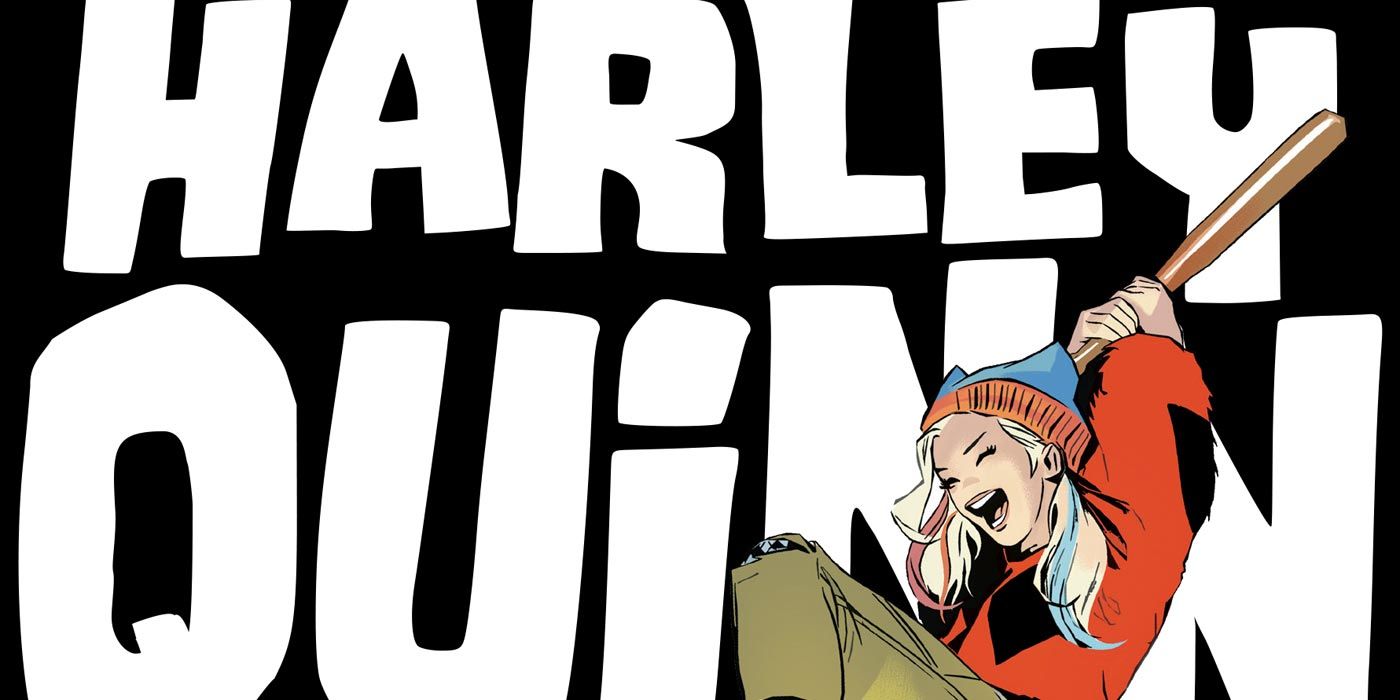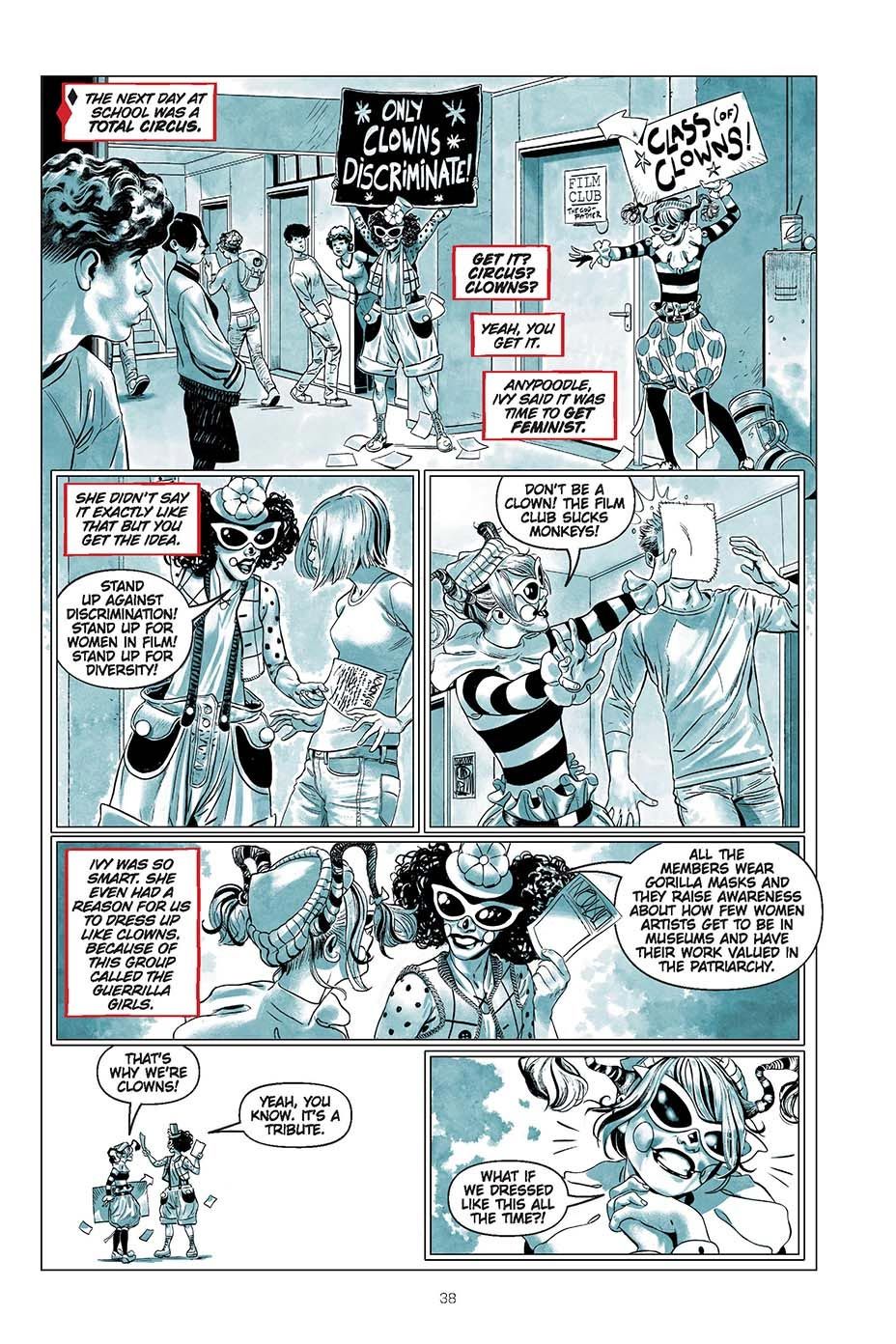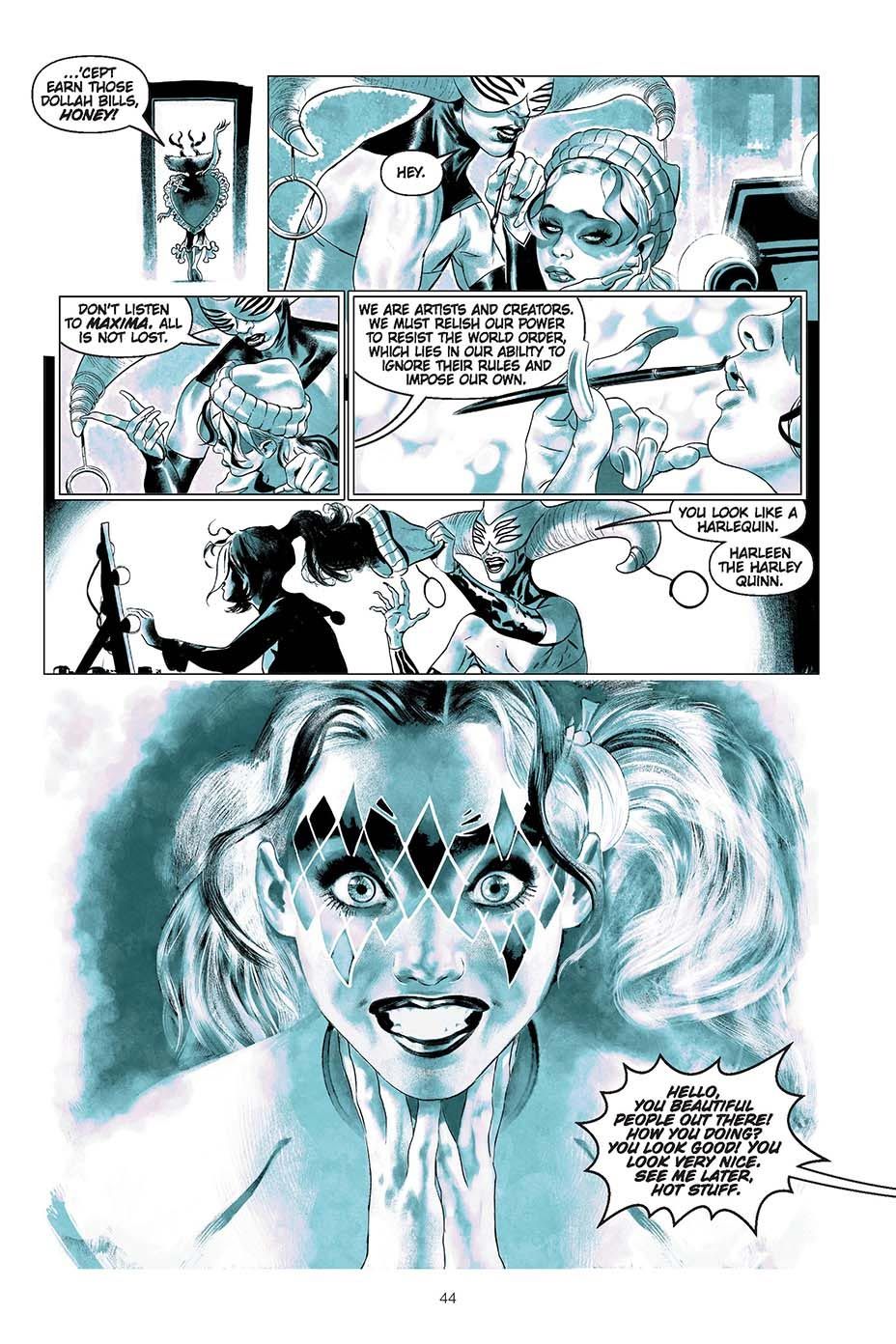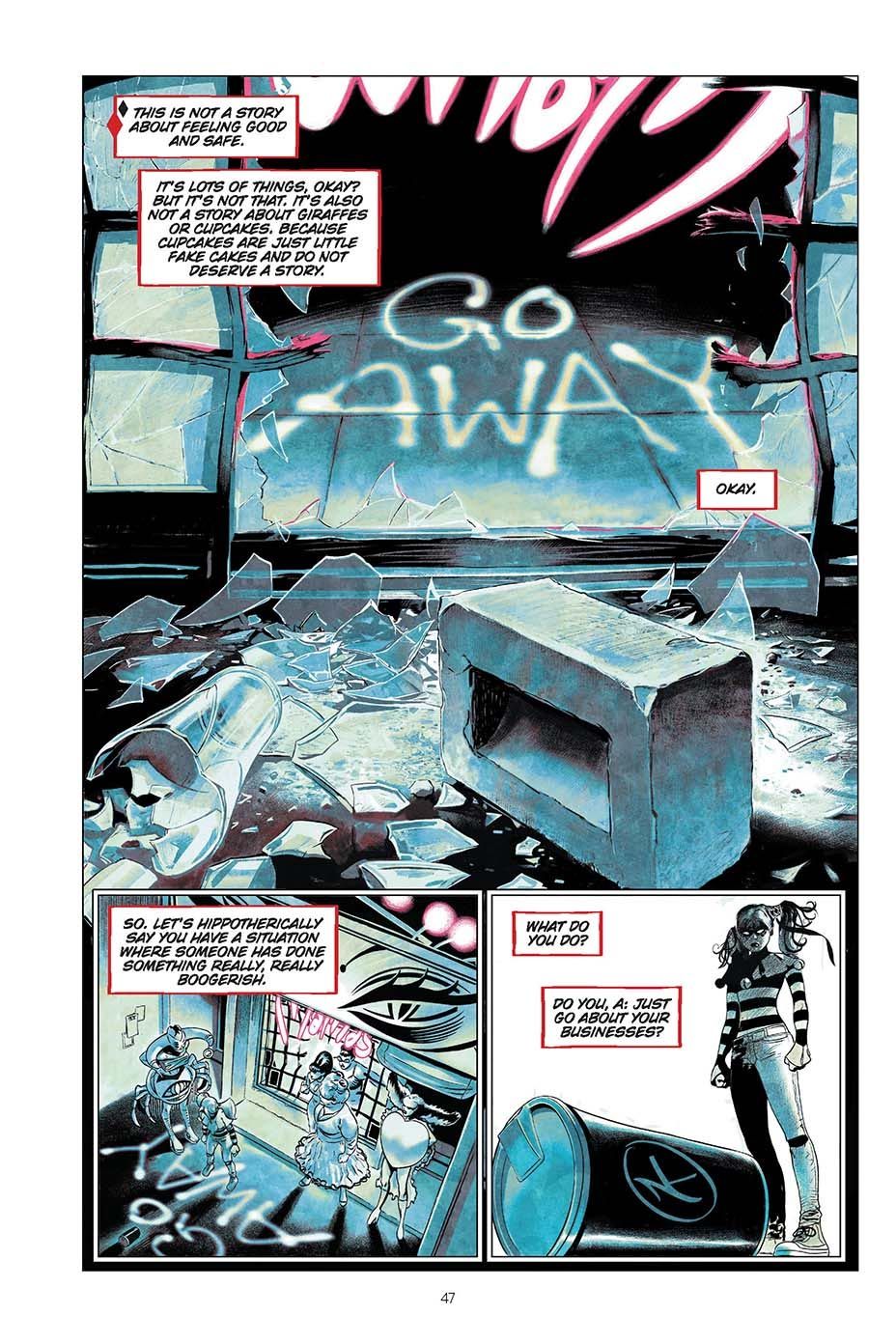The latest original graphic novel from DC Ink, DC's publishing imprint for young-adult readers, is Harley Quinn: Breaking Glass, which reimagines the antihero as teenager trying to find her way at a new high school in Gotham City. Created by award-winning writer Mariko Tamaki and fan-favorite artist Steve Pugh, the graphic novel provides a fresh take on the popular character, outside of DC Universe continuity, without jettisoning the more recognizable elements from her classic depiction.
In an exclusive interview with CBR, Tamaki and Pugh teased their take on Harley Quinn and other notable denizens of Gotham while sharing their love for the character.
CBR: How did this project, reimagining Harley Quinn as a high-schooler for DC Ink, come about?
Mariko Tamaki: I had just finished Supergirl: Being Super with Joëlle Jones and was looking for another project, something along those lines, and I got invited into DC, and they asked me if I would consider doing sort of another version of what I did with Being Super for another character. And I had my pick, I could pick anybody I wanted, so I immediately picked Harley Quinn. And the DC Ink stuff started happening and, on my side, the only artist I wanted to work with was Steve because I had read The Flintstones comic and as soon as I saw that, I was like "This is totally perfect. This is the best person to draw Harley Quinn and a bunch of gorgeous drag queens; it would be Steve."
CBR: Steve, coming from working on supernatural horror books like Hellblazer and Animal Man or working the trenches of Mega City-One and other 2000 A.D. titles, how was the shift jumping into Harley Quinn?
Steve Pugh: It wouldn't seem obvious, would it [laughs]? I never draw anything the same way twice, and I would probably be more popular if I did. The weird thing about it is years ago, when I was self-publishing, I had been doing these kind of wannabe-Jaime Hernandez slice-of-life books, and when I read the Harley Quinn script I thought, "God, this is exactly what I wanted to do." And I had kind of gone this horror route into superheroes and the weird eight years I had spent doing full-color stuff with Hotwire. And then [DC Executive Editor] Marie Javins, who is responsible for The Flintstones book, just said, "Can you read this and do a couple sketches and see if it suits your hand?"
And Mariko was really, really lovely about the sketches, and here we are!
Tamaki: I was proud of his work! This is what comics does really well; when everybody wants to do the thing they like and it's perfect!
CBR: To build off that, what is your collaborative process like?
Tamaki: Well, this is the first time I've heard Steve's voice ...[laughs]
Pugh: Mariko tells me what to do and I do it!
Tamaki: I think the thing we have is Marie Javins, who such an incredible editor. Her deal has always been to make space for people to do what they do. She and I worked on the script quite a bit and, in the script obviously we're writing pages, but I wanted to leave Steve as much room as possible to do what he wanted to do. So it's a standard comic script, with pages and panels but, within that, I would be like, "If you want to make this bigger or if makes sense to move these things over..." I think that that's the comics process as a writer: Make sure you're never in the illustrator's way. So we tried really hard to make space for that.
CBR: Mariko, you had come out the gate focusing on a lot of coming-of-age stories, in high school or just young adults in general; outsiders that felt trapped in confines of society, which we certainly see here too. What is it about that kind of story that you find appealing as a storyteller?
Tamaki: You can probably do it with adults too, and I've done it with older characters, but I think it's a time when there's more choices available to you or the choices are more significant. With superhero stories, and this is in contrast to the Supergirl story where, obviously, Supergirl is going to be Supergirl; it seems like a more foregone conclusion that that's what she's going to do. I think this is where teens' stories matches up with superheroes so well because it's such an overwhelming decision; if you're going to be a hero or villain or what kind of hero are you going to be. That struggle, that crossroads is such a fruitful crossroads to look at.
CBR: With this you're reimagining Harleen, not as a psychologist at Arkham, but as a high schooler just trying to get by while making friends in a world of increasing societal class structure. What is it you both wanted to inject here, both visually and in terms of writing the character and the world around her?
Tamaki: I really just wanted to play with such a cool character, bring out the things I love so much about Harley. That independent spirit, that fierceness, and sort of play up that fierceness in terms of loyalty and be clear about her decisions as someone who just does what she wants to do because she thinks it's the right thing at the time and she doesn't have any concerns about whether or not it's the right thing. I just wanted to play with the freedom of that character. I think there's something so primally awesome about a character like Harley and I just really wanted to enjoy that part of her. I really wasn't trying to reinvent anything, I was just enjoying writing a character I'm a big fan of.
CBR: Steve, how did you want to reinterpret that world visually?
Pugh: Well, the world is Gotham. I think the draw for me was Mariko's characters are just so animated, so full of life; it's all in their face, in their body language, or in their lives. It was a real joy to be drawing characters that made commit emotions through their face rather than make [an angry] face for 23 pages. It was great to have characters with differences in their body language; I had to work out how each of them stood, how each of them had reactions to the same events. It was really about trying to find these people, trying to find them as real people, because when I read the script, I needed to make that script happen; I needed to make those characters be realized and that was my aim really. And to do weird things with color.
Tamaki: I mean, the color is so good! The thing I love about the illustrations is that it's clearly Harley as a teenager, it's not norm city. It's not that she's a boring character or Clark Kent-ing it, there's something a little bit special every time you see here; in her body language and facial expressions. It's such a great visualization of her as a teenager which I really love.
Pugh: The script was great because sometimes a writer won't let you know what a character is thinking, leave it up to you to interpret the scene. This script let me and reader see Harley's internal dialogue really flow. So you knew when she was struggling with something or when she was determined to make something happen or fight. For an artist, that's amazing, to actually have that on the page and not have to guess. It makes you feel like you have solid ground beneath you.
CBR: The drag queen shows are really seen in this story as a safe place and one of self-discovery, including for Harley. What was about that environment that you wanted to add to the graphic novel?
Tamaki: In imagining an origin for Harley and place where she gets her style, you have this person whose style is very theatrical and who is very over-the-top so, for me, that's someone who connects to drag very well; in terms of legibility and giving that level of showpersonship, so drag seemed like a perfect fit. I think this story is kind of about somebody with deep loyalties and finds this new family and so queer family, the idea of a chosen family, is something I wanted to add to the script; the idea of people who had to remake their world. I wanted to give Harley sort of positive and negative influences and that's one of the positive ones. Also, I love drag queens and I wanted Steve to draw drag queens.
Pugh: I loved, loved the characters, each one has their own [personality]. And Harley's journey has always been about finding family; maybe sometimes she finds the wrong family and sometimes she finds the right family. The drag queens are very much people who love her and take her in and then she gets to return that love.
CBR: It is certainly the most healthy relationship I have ever seen her in.
Tamaki: [laughs] Right?!
CBR: What is the thing you're most proud or excited of about Harley Quinn: Breaking Glass?
Tamaki: I really love the triangle of Harley and the Joker and Ivy, I think that sort of triad of influences of different ways of doing the world and how they interact in the story. In terms of setting up a period of influences and complexity of choices and the way they all work in the story. I really enjoy Harley's last conversation with the Joker, that's one of my favorite moments; yeah, those three characters together.
Pugh: I'm really proud of the whole book but there's a scene where Harley gets her first do-over by the drag queens and [drag queen] Hello Dolly pulls [Harley's] woolly hat off that's been kind of holding on to every page since we first saw her and she sees herself in the mirror and it's a sort of transformational moment, her eyes are just huge. I loved the way that was staged and was just really pleased the way that came together. I consider myself more of a story page artist than a cover or pinup artist and was really pleased having done that.
Harley Quinn: Breaking Glass arrives Wednesday in comic stores, and Sept. 3 in bookstores.




